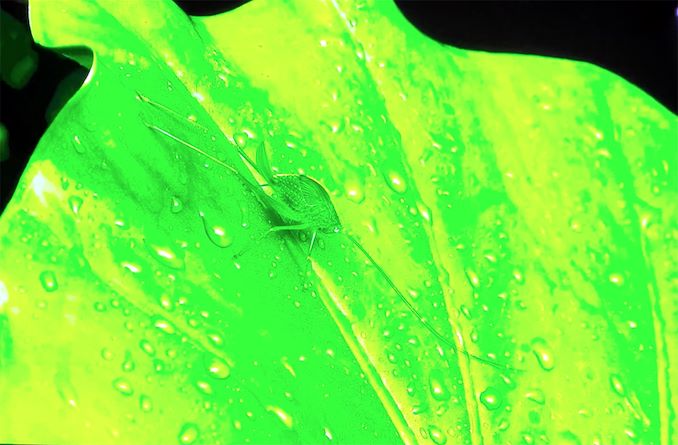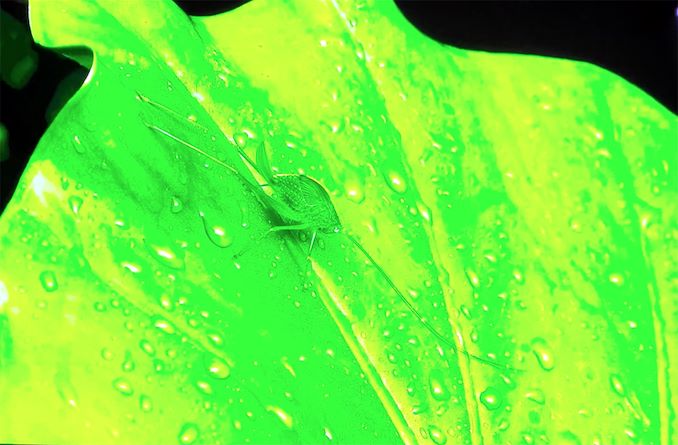TCL Shows Off 132-Inch Micro LED 4K UHDTV: 24,000,000 Micro LEDs
by Anton Shilov on September 13, 2019 2:00 PM EST
Direct view Micro LED displays are a relatively new display technology that so far has been publicly demonstrated only by Samsung and Sony, the two of which tend to experiment with variety of technologies in general. At IFA last week TCL, a major maker of televisions, threw its hat into the ring by demonstrating its ultra-large Micro LED-based Ultra-HD TV.
Dubbed the Cinema Wall 132-Inch 4K, TCL’s Micro LED television uses 24,000,000 individually controlled LEDs as RGB subpixels, and features a 1,500 nits max brightness level as well as a 2,500,000 contrast ratio (good enough to compete against OLEDs). The manufacturer claims that the TV can display a wide color gamut, but does not disclose whether they're using DCI-P3 or BT.2020.
Like other early-generation display products, TCL is not revealing if and when plans to release its 132-inch 4K Micro LED TV commercially, but the fact that that it has a device that is good enough to be shown in public (see the video by Quantum OLED channel here) is an important step. Just like other makers of Micro LED televisions, TCL might want to increase peak brightness supported by these devices, as many modern titles are post-produced using Dolby’s Pulsar reference monitor for Dolby Vision HDR, which has a peak brightness level of 4000 nits.
Numerous TV makers are currently investigating Micro LED technology as a viable alternative to OLED-based screens. While OLEDs tend to offer superior contrast ratio when compared to LCDs, they have a number of trade-offs, including off-axis color shifting, ghosting, burn-in, etc. WOLED has mitigated some of these issues, but it has also introduced others due to the inherient limitations of using color filters.
By contrast Micro LED TVs are expected to be free of such drawbacks, while still retaining the advantages of individual LEDs like brightness, contrast, fast response time, and wide viewing angles. As an added bonus, Micro LED TVs will not need any bezels and can be made very thin.
Related Reading:
- Sony Develops 16K Display: A 783-Inch ‘Crystal LED’ Screen
- Samsung at CES 2019: 219-Inch and 75-Inch Micro LED Ultra-HD TVs Demonstrated
Sources: Quantum OLED, MicroLED.info, LEDs Inside













74 Comments
View All Comments
rpg1966 - Saturday, September 14, 2019 - link
"If it covers the entire color space for 8K..."What?
vFunct - Friday, September 13, 2019 - link
There aren't really "micro" LED's. They're more regular, direct-view LEDs.I expect actual micro-LEDs to be arranged via lithography, instead of assembled.
boozed - Friday, September 13, 2019 - link
What are a bunch of overexposed photos supposed to show?mode_13h - Friday, September 13, 2019 - link
Um, that it's really friggin' bright?A better way to show off HDR would be to have a full-frame picture that's normally-exposed + some zoomed-in shots that show the shadow detail.
Oxford Guy - Saturday, September 14, 2019 - link
The only credible thing is to do tech demo illustrations, not post random images subjected to grotesque extremes of information loss masquerading as improvement.boozed - Sunday, September 15, 2019 - link
Problem is that without knowing the exposure settings, we don't even know that!Oxford Guy - Saturday, September 14, 2019 - link
A) That the people who made them are amateurs.B) That they think we're really stupid.
C) Combination of the two.
mode_13h - Friday, September 13, 2019 - link
What I want to know is where the other 883,200 pixels went.mode_13h - Friday, September 13, 2019 - link
Err... subpixels, rather.aenews - Saturday, September 14, 2019 - link
They can't math =)